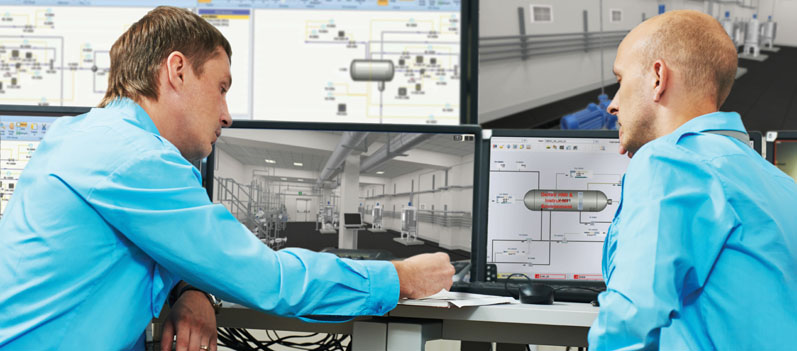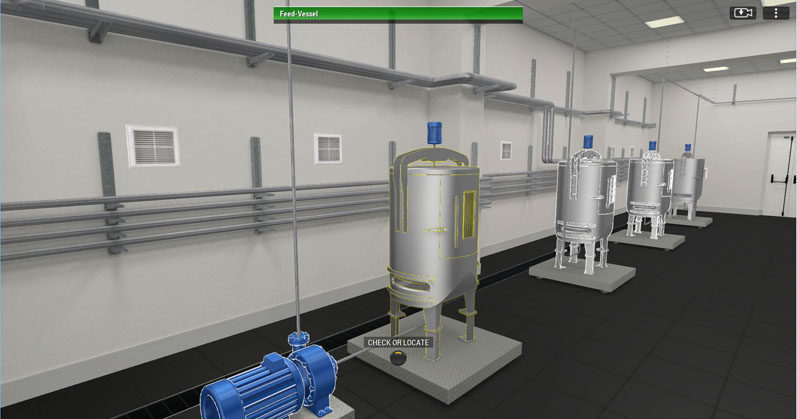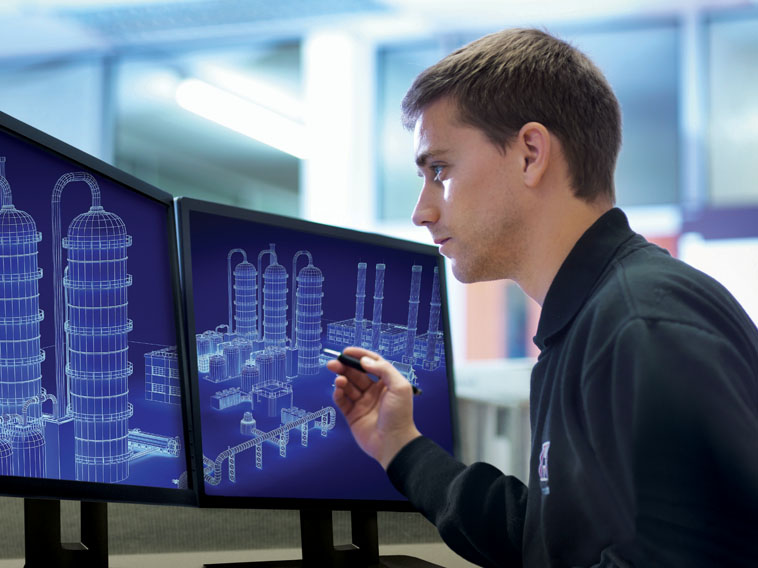Pharmaceutical manufacturers face a number of ongoing challenges. These include reducing project and production cycle times and costs, increasing product quality and yields, and being able to respond to changing government regulations and increased global competition.
Advanced digital solutions play a crucial role in achieving the process optimisation that can help them to meet these challenges and create new opportunities.
One such solution that is proving to be a game-changer across the industry is digital twin technology.
A digital plant replica
A digital twin is a software-based virtual replica of the complete physical assets of a production facility, including its process equipment, instrumentation and controls, as well as the manufacturing processes taking place within the plant, such as chemical reactions and fermentation.
Using this replica, the operation of these assets is modelled and simulated throughout their lifecycles.
A digital twin uses dynamic simulation to provide a virtual environment in which process control and operational solutions are designed and tested before being applied to the live plant.
Experimenting in this way enables manufacturers to discover which changes will produce the best results, enabling them to perform technology transfer, optimise parameters and perfect batch design without affecting the live operation.
A digital twin will usually represent a replica of the control system, operator displays and alarms, along with process modelling and a real-time execution and integration solution for the automation systems.
Manufacturing
Within the manufacturing process, the implementation of a digital twin can improve performance across a plant’s lifecycle. This includes
- conceptual definition
- before and during front end engineering design
- automation system design, implementation and testing
- factory acceptance testing
- operator training and competency assessment
- commissioning.
Process design
In the process design phase, digital twin technology can build an initial representation of a plant. This allows many issues that would otherwise only be highlighted during commissioning to be identified and addressed beforehand, resulting in more efficient and faster commissioning.
When the plant is operational, the digital twin can provide data and insight into equipment and system health, helping users to optimise preventive maintenance practices and avoid costly unscheduled downtime.

Compliance
Digital twin technology can also prove beneficial in the area of regulatory compliance.
A digital twin can be used to demonstrate compliance with both Good Automated Manufacturing Practice (GAMP 5) and US Food and Drug Administration (FDA) requirements to ensure products are consistently produced and controlled according to specific standards.
Training
Running an exact digital replica in parallel with the live plant also creates a valuable means of training control room operators and technicians, and familiarising them with the control system and processes before start-up.
Digital twins expose personnel to what they will experience in their actual control rooms, but in an offline and risk-free environment, thus making them better equipped to successfully control any process deviations or abnormal situations.
Simulation software
A digital twin is developed using process design information, including piping and instrumentation diagrams, process flow diagrams and other data governing the process.
This information is then converted and developed into a software-based representation of the process using simulation software.
As this software has a wide range of preconfigured unit objects, models can be developed to provide a highly accurate representation of the behaviour and dynamics of the process under consideration.
Once the model has been built and tested, a copy of the control system configuration is integrated into the model, which provides a replica of the production system — with an identical operator interface.
The accuracy of the digital twin can then be constantly enhanced with data taken directly from the process as it becomes available.

A practical investment
Digital twin solutions are often viewed as a discretionary spend in the pharmaceutical industry — mainly because of a lack of awareness about how they can bring tangible value quickly and consistently in the manufacturing process.
However, an increasing number of manufacturers are discovering that unlocking the potential of this technology creates significant business value, enabling a digital twin to be regarded as a practical investment.
The benefits that can be achieved by implementing a digital twin can lead to increased efficiency and reduced project timelines, costs and risk. These benefits include
- reducing the time associated with operational qualification and installation qualification activities through earlier and more comprehensive testing of the process and control system
- accelerating the process from drug development through to production using the accuracy and engineering support provided by the digital twin
- enabling cost-effective compliance and validation of the process control system, as well as operating procedures
- providing a platform to enable faster operator training and competency assessment
- allowing comprehensive testing and integration of the control system with higher level 3 systems such as a manufacturing execution system (MES); this allows entire campaigns to be designed and planned with zero impact on actual production.
Testing and validation support
The ability of a digital twin to support the testing and validation of the process control system is a key area of value for pharmaceutical manufacturers.
Consequently, a simulation software option has been developed to provide automated and documented testing to support control system validation, significantly reducing the time required for installation qualification and operational qualification activities.
This enables users to create test scripts that execute commands in both the simulation software and any offline control system that has an open platform communication (OPC) server.
The test scripts are easy to build, supporting an automated approach to control system testing and documentation development. They can be repeated after any control system configuration change as an effective means of identifying and eliminating regression errors.
After tests have been executed, log reports can be automatically saved, thereby providing a permanent record of the system test.

Virtual and augmented reality
As digital twin technology evolves, the incorporation of both virtual and augmented reality has an important role to play in adding even greater business value.
Virtual reality (VR), in particular, has the ability to vastly simplify training and maintenance activities when dealing with complex pharmaceutical processes. A good example would be a cleanroom environment.
Imagine being able to recreate every step associated with manufacturing a batch of product, including those that require outside operator input, without having to undertake the tasks associated with physically entering a clean environment.
In fact, such VR environments already exist and are made much more powerful by being integrated with the process simulation model.
This provides a highly realistic and immersive experience that replicates the dynamics and behaviour of the process and enables operators to not only see the VR environment but also interact with it and note the effects of any changes they make.
Best practice
To maximise the value of a digital twin to manufacturers, there are some best practice requirements that should be adhered to when implementing the technology. These include
- dynamic process models must be first principles, following fluid dynamic, kinetic and thermodynamic laws, but must also be dynamic and real-time; the latter must support good process dynamics (even fast ones) without changes to process control system loop tuning
- applying the same digital twin solution to both capital expenditure and operational expenditure provides a cost-effective and consistent approach that maximises the return on investment during model development
- the digital twin solution must allow incremental model development, enhancement and tuning to support the evolving requirements of the lifecycle: the ability to start with preliminary data and then tune it with detailed engineering or actual data is essential; the simulation must support a wide range of process model complexity, from simple IO models to complex unit operations
- the control system simulator used with the dynamic simulator must run the exact application software without deletions or modifications from the plant system; to provide a solution that can cost-effectively be kept current with the plant system and to ensure that operator training accurately reflects real-world experiences, it is essential that the control system simulator duplicates the identical control system configuration with no additions or deletions
- all process automation system IO should be simulated, even if their signals come from simplified models; this allows operator training or operational studies to extend beyond the boundaries of the rigorous process models.
Conclusion
By providing insight that improves performance and helps to predict the future of assets, digital twin technology has the potential to transform pharmaceutical production.
By implementing this technology, manufacturers can support design and testing activities while reducing risk and enabling their products to get to market quicker.
